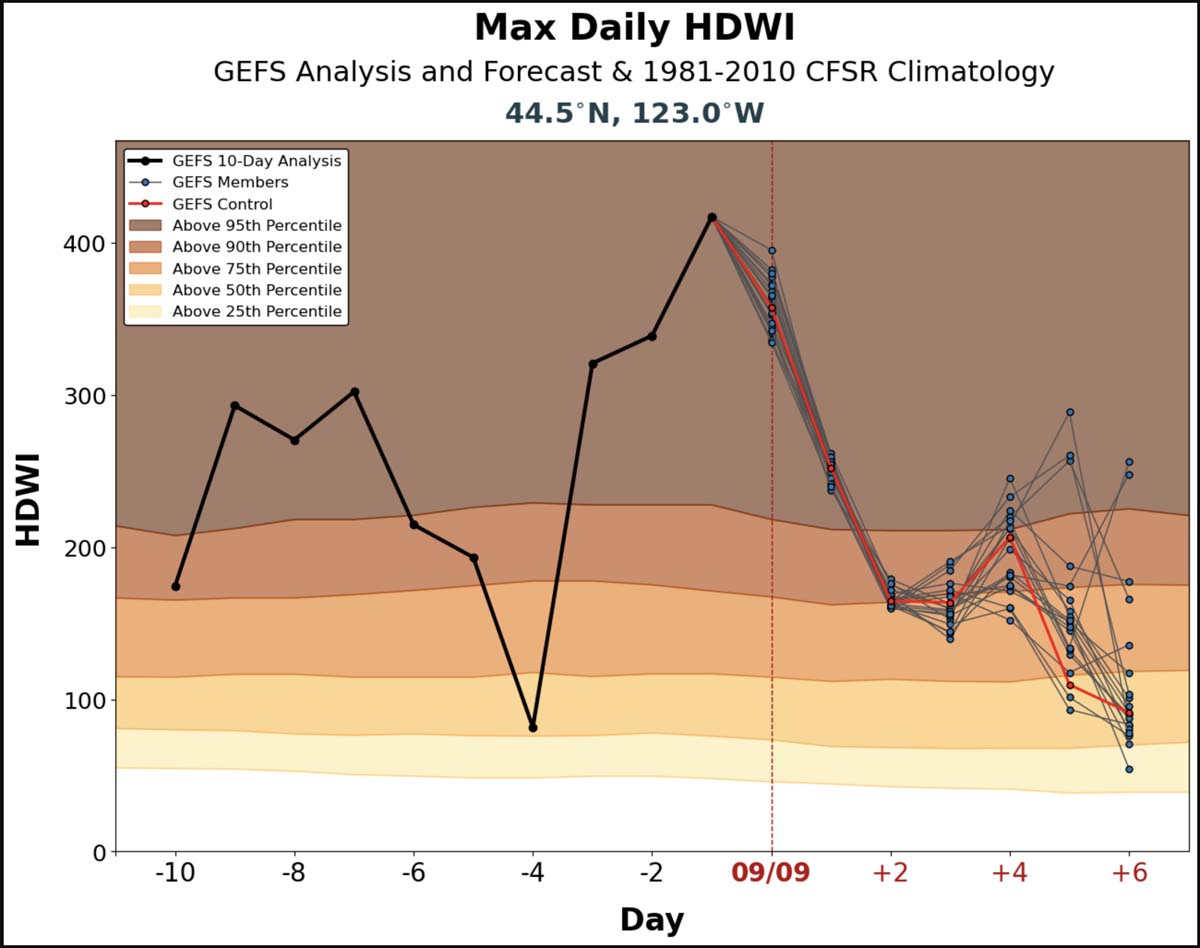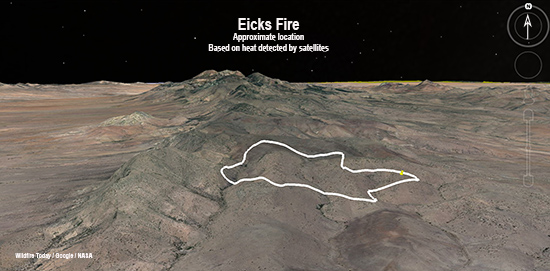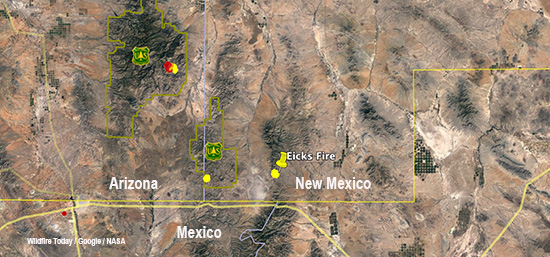An analysis of the Labor Day 2020 wildfires in Oregon determined that the combination of high temperatures, unusually dry fuels, and strong winds occurring at the same time was unprecedented in the area.

That flammable combination led to an unprecedented number of acres burned in the Oregon Cascades, about 11 percent of the mountain range, and more than the previous 36 years combined.
Below is a summary of research published last month titled, “Compound Extremes Drive the Western Oregon Wildfires of September 2020,” by John T. Abatzoglou, David E. Rupp, Larry W. O’Neill, and Mojtaba Sadegh.
“Several very large fires in western Oregon spread rapidly during an unusually strong offshore wind event that commenced on Labor Day in 2020. The Labor Day fires burned more area of the Oregon Cascades than had burned in the previous 36 years combined and very likely exceeded the area burned in any single year for at least the past 120 years. The fires damaged over 4,000 structures, led to several fatalities, placed over 10% of the state’s residents under some level of evacuation advisory, and contributed to the hazardous air quality across the Northwestern United States.
“A compound set of weather-related factors leading up to and during the fires facilitated these extreme fires. Unusually warm conditions with limited precipitation in the 60-days leading up to the fires allowed for fuels to become particularly dry and combustible by early September. Downslope offshore winds materialized during September 7–9, 2020 across the Oregon Cascades bringing exceptionally strong winds and dry air that drove rapid rates of fire spread. While neither of these individual factors was unprecedented, the concurrence of these drivers created conditions unmatched in the observational record.”
The authors called that the “Plain Language Summary.” To drill down even more into Plain Language, the conditions in Oregon were hot, dry, and windy.
The Hot-Dry-Windy Index (HDWI) is a new tool for firefighters to predict weather conditions which can affect the spread of wildfires.
It is described as being very simple and only considers the atmospheric factors of heat, moisture, and wind. To be more precise, it is a multiplication of the maximum wind speed and maximum vapor pressure deficit (VPD) in the lowest 50 or so millibars in the atmosphere. It does not consider fuel moisture.
In preliminary data that had not been peer reviewed when we wrote about it February 20, 2019, the HDWI was far more useful than the Haines Index in predicting the growth of the Chetco Bar Fire which burned over 191,000 acres in Southwest Oregon in July, 2017.
The HDWI for Oregon’s Willamette Valley was far above the 95th percentile September 6-9, 2020. During the 10 days prior to September 9 it was above the 90th percentile on nine days. The strong winds occurred September 7-9, and most of the growth of the Labor Day fires was during that period.


Thanks and a tip of the hat go out to Bob.














